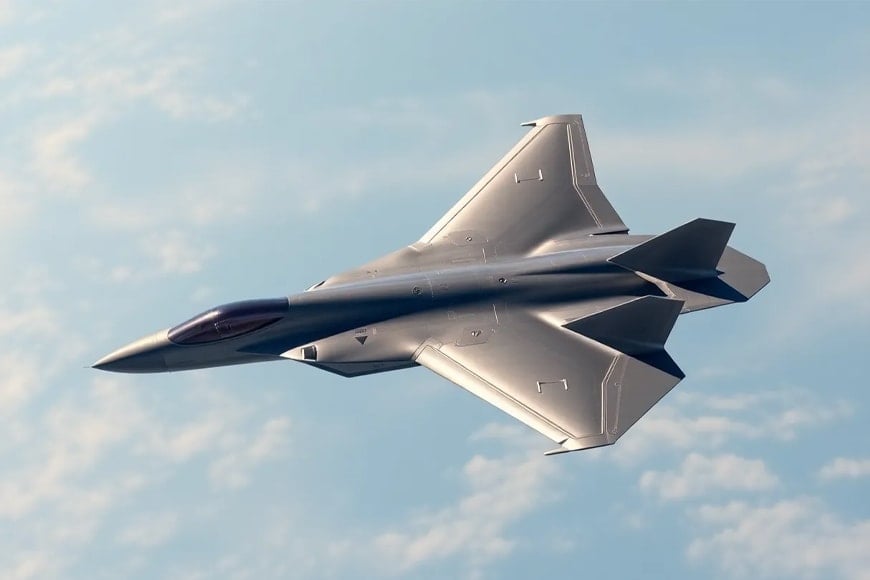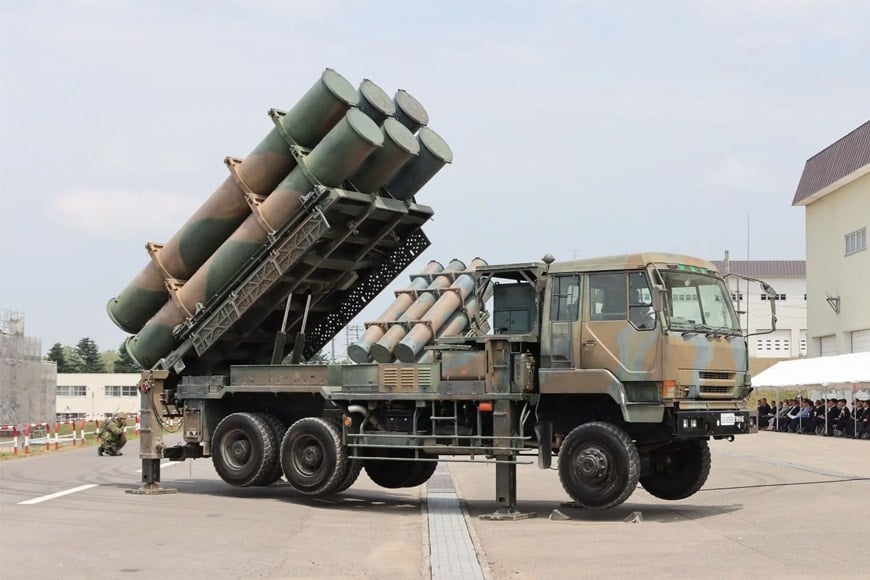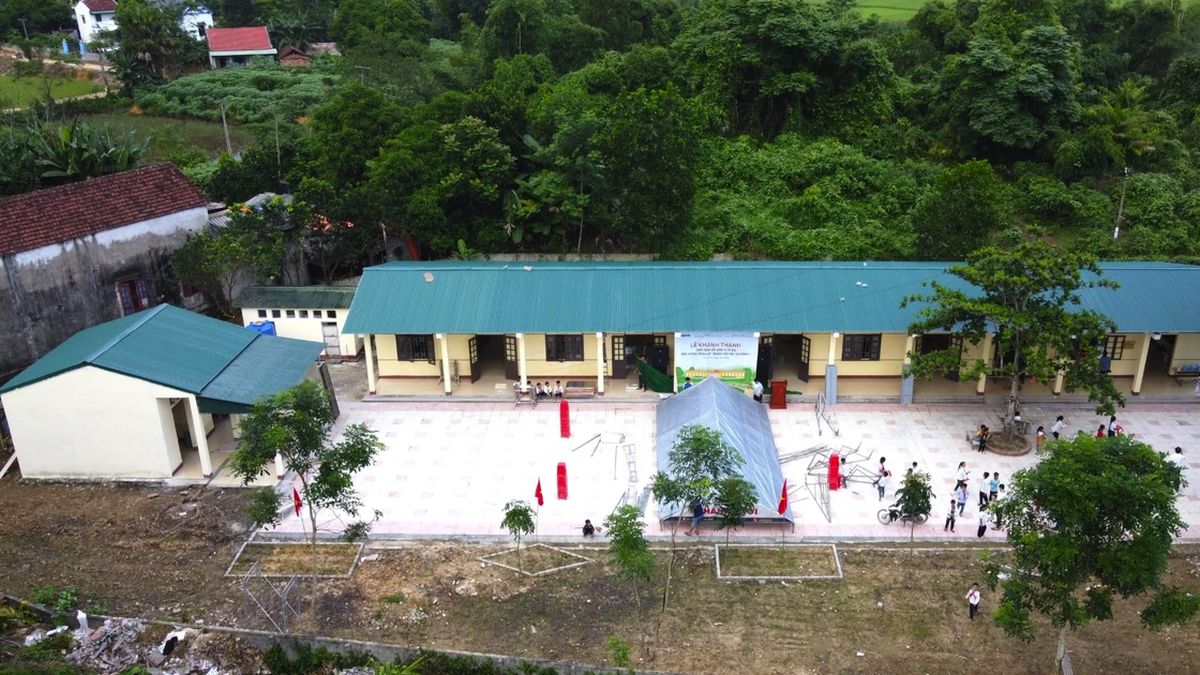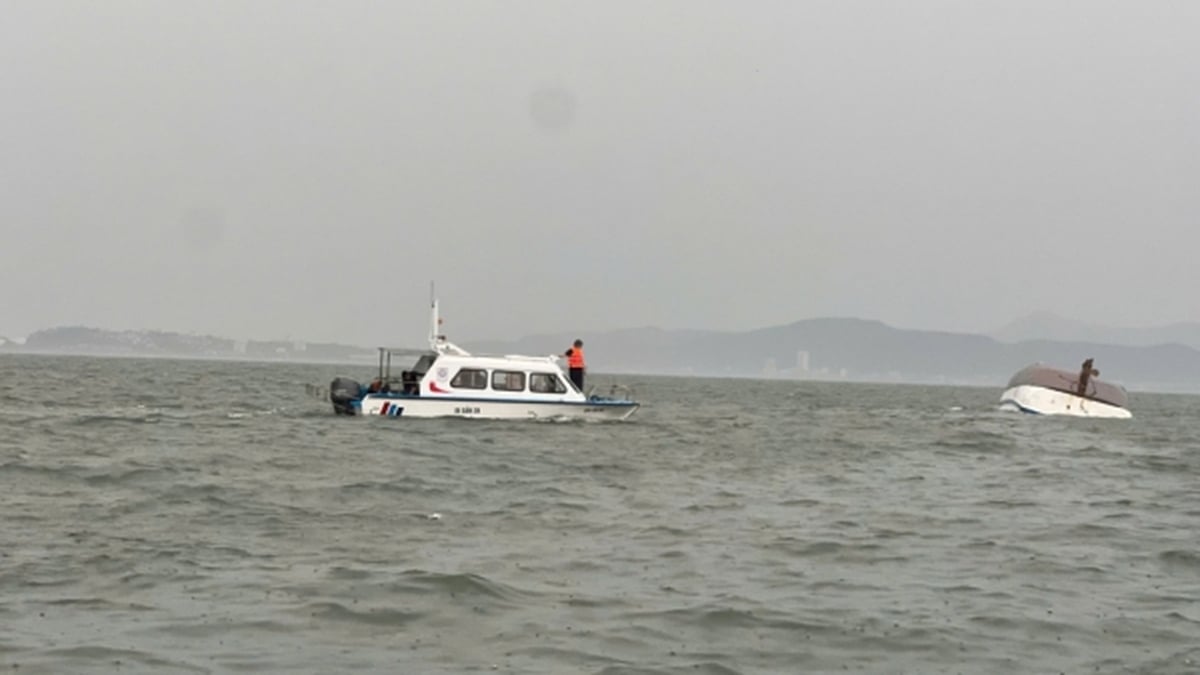* The US F-47 6th generation fighter is capable of reaching Mach 2 speed.
Recently, the US Air Force Chief of Staff, General David Allvin, posted on his X account a graphic image marking a major change in official US communications, related to the ability to dominate the air in the future.
For the first time, the main technical specifications of the 6th generation manned fighter developed under the Next Generation Air Superiority (NGAD) program have been made public.
 |
Simulated image of the US F-47 6th generation fighter. Photo: US Air Force |
The fighter, now designated the F-47, developed by Boeing, represents an advancement in US warfighting doctrine, designed to perform penetration and combat missions in highly contested environments, especially against adversaries with modern anti-access/area denial (A2/AD) systems. This information is not only a statement of direction, but also clearly states the performance and structural goals of the potential replacement candidate for the F-22 Raptor.
One of the highlights of the F-47 is its range, estimated at more than 1,850km, allowing deep strikes in areas where current US aircraft are limited, such as the Indo- Pacific region, where there are many long-range air defense systems.
The F-47’s top speed is reportedly in excess of Mach 2, but the key difference lies in its ability to sustain supersonic flight without afterburners, a capability previously available on the F-22, but which will be further upgraded to serve long-range missions, while reducing heat emissions and fuel consumption. Combined with “Stealth++” stealth technology, the F-47 is expected to outperform previous generations in terms of reducing radar and infrared signatures.
The F-47 is not a multi-role fighter, it is designed entirely for the air superiority fighter role, with the ability to penetrate enemy airspace, survive in hostile environments, and retreat undetected. The aircraft is intended to operate within a distributed command and control (C2) system, interacting with satellites, sensors, and manned and unmanned platforms.
The F-47 is expected to be the central platform in America's future air combat, replacing 5th generation aircraft and maintaining dominance in modern conflicts.
* Frigate HDMS Iver Huitfeldt shows off its capabilities in NATO exercise
The Royal Danish Navy's flagship frigate, HDMS Iver Huitfeldt (F361), is actively participating in a large-scale NATO live-fire integrated air and missile defense exercise off Bodo, Norway, organized by the US 6th Fleet and coordinated by the NATO Naval Striking and Support Force (STRIKFORNATO), Army Recognition reported.
This is the largest-ever exercise in the European region, with a higher level of complexity, the participation of more countries and more threats than previous events.
 |
The Royal Danish Navy frigate HDMS Iver Huitfeldt (F361) transits off the coast of Bodo, Norway, as part of NATO exercise ASD/FS 25. Photo: US Department of Defense |
The deployment of HDMS Iver Huitfeldt to ASD/FS 25 is a clear demonstration of Denmark's strategic commitment to collective defence.
Commissioned in 2011, the Iver Huitfeldt-class frigates are among the most advanced air defense platforms in NATO's fleet. They are specifically designed for integrated air defense missions, equipped with modern sensors and weapons systems. They are equipped with the Thales SMART-L long-range surveillance radar and the APAR multi-function radar system, allowing them to detect and track multiple air targets at long ranges. These radars are linked to an advanced combat management system, processing target data in real time.
* Japan to test Type 88 long-range missile
For the first time since its establishment, the Japan Self-Defense Forces will conduct a live-fire exercise with long-range missiles on its own territory, marking a significant shift in defense doctrine.
The exercise is scheduled to take place from June 19 to 30 at a missile launch site near the Shizunai base in Shinhidaka town, located on the southern coast of Hokkaido.
 |
The Type 88 missile flies on a complex pre-programmed trajectory, allowing it to traverse complex terrain before locking onto its target with an active radar system in the final phase. Photo: Telegram |
According to the Asahi newspaper, the Japanese Ministry of Defense confirmed that two Type 88 missiles without warheads will be launched at two different times, aiming at a target at sea within a radius of 40km southwest of the launch point.
The Type 88 is a ground-launched anti-ship missile developed entirely by Japan, based on the ASM-1 air-launched missile that was developed in the late 1970s. The missile is designed to be deployed more than 100km from the coast to avoid being attacked by enemy naval forces in the event of an amphibious landing.
Unlike coastal defense missiles such as Exocet or Harpoon, the Type 88 flies on a complex pre-programmed trajectory, allowing it to cross mountainous terrain and fly over the sea at low altitude, then use active radar in the terminal phase to find and lock on to the target.
The Type 88 is about 5m long, 35cm in diameter, weighs 650kg, and carries a conventional warhead weighing 225-270kg. The missile has a subsonic speed of Mach 0.93 (about 1,150km/h), an estimated range of about 150km, and is coated with radar-absorbing material, helping to reduce the radar signal reflection area and increase penetration ability.
QUYNH OANH (synthesis)
* Today's World Military column on the People's Army Electronic Newspaper sends readers the latest information on world military security and defense activities in the past 24 hours.
Source: https://baodaknong.vn/quan-su-the-gioi-hom-nay-17-5-tiem-kich-f-47-cua-my-co-kha-nang-dat-van-toc-hon-2-000km-gio-252803.html

































































































Comment (0)